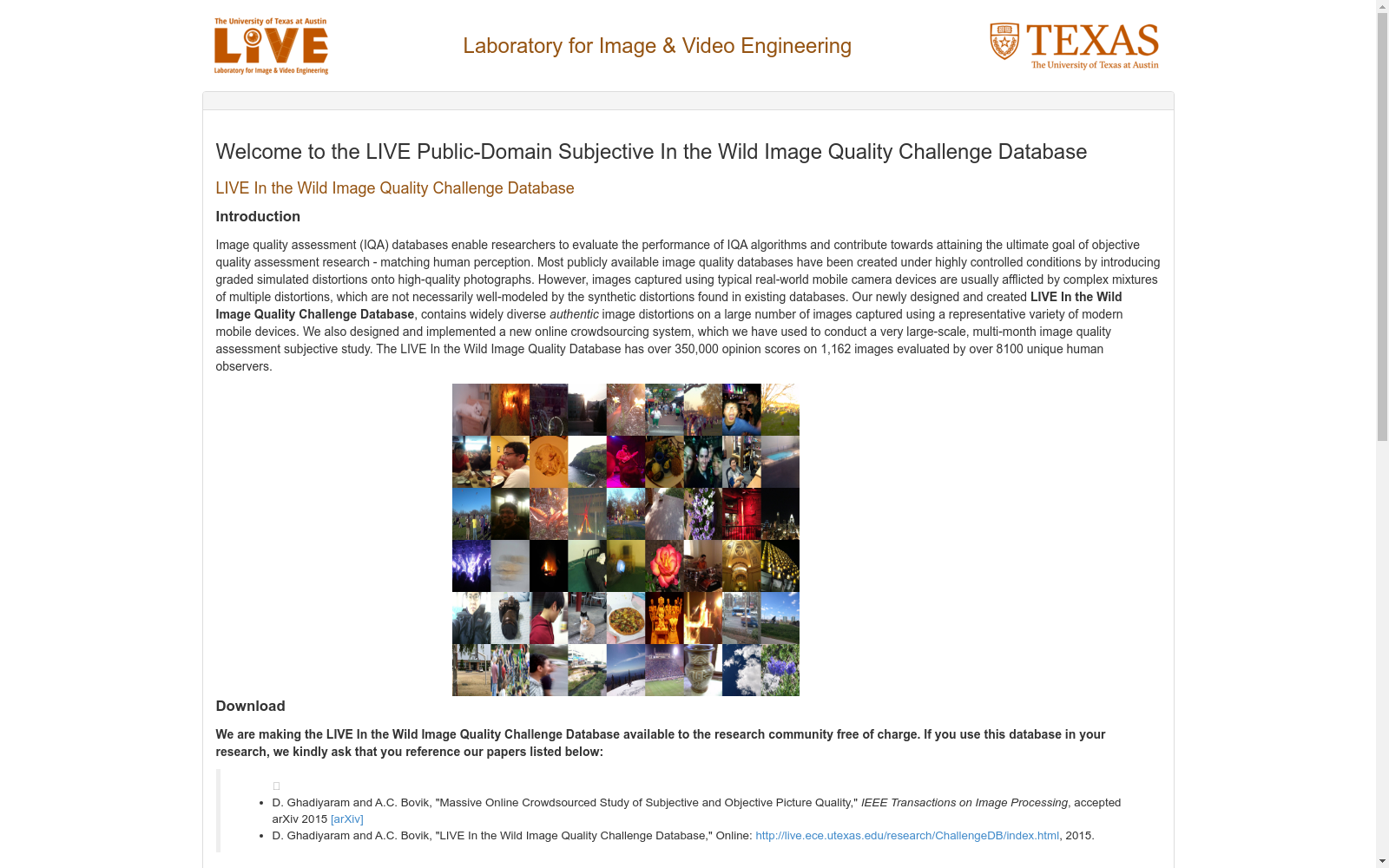LIVE Challenge Dataset|视频质量评估数据集|算法性能数据集
收藏
- LIVE Challenge Dataset首次发表,由H.R. Sheikh等人提出,旨在评估图像质量评估算法。
- 该数据集首次应用于国际图像质量评估会议(QoMEX),成为图像质量评估领域的重要基准。
- LIVE Challenge Dataset被广泛应用于多个研究项目中,显著推动了图像质量评估技术的发展。
- 数据集的扩展版本发布,增加了更多类型的失真图像,进一步丰富了研究内容。
- LIVE Challenge Dataset成为图像质量评估领域的重要参考,被多个国际期刊和会议引用。
中国劳动力动态调查
“中国劳动力动态调查” (China Labor-force Dynamics Survey,简称 CLDS)是“985”三期“中山大学社会科学特色数据库建设”专项内容,CLDS的目的是通过对中国城乡以村/居为追踪范围的家庭、劳动力个体开展每两年一次的动态追踪调查,系统地监测村/居社区的社会结构和家庭、劳动力个体的变化与相互影响,建立劳动力、家庭和社区三个层次上的追踪数据库,从而为进行实证导向的高质量的理论研究和政策研究提供基础数据。
中国学术调查数据资料库 收录
CE-CSL
CE-CSL数据集是由哈尔滨工程大学智能科学与工程学院创建的中文连续手语数据集,旨在解决现有数据集在复杂环境下的局限性。该数据集包含5,988个从日常生活场景中收集的连续手语视频片段,涵盖超过70种不同的复杂背景,确保了数据集的代表性和泛化能力。数据集的创建过程严格遵循实际应用导向,通过收集大量真实场景下的手语视频材料,覆盖了广泛的情境变化和环境复杂性。CE-CSL数据集主要应用于连续手语识别领域,旨在提高手语识别技术在复杂环境中的准确性和效率,促进聋人与听人社区之间的无障碍沟通。
arXiv 收录
LFW
人脸数据集;LFW数据集共有13233张人脸图像,每张图像均给出对应的人名,共有5749人,且绝大部分人仅有一张图片。每张图片的尺寸为250X250,绝大部分为彩色图像,但也存在少许黑白人脸图片。 URL: http://vis-www.cs.umass.edu/lfw/index.html#download
AI_Studio 收录
LibriSpeech
LibriSpeech 是一个大约 1000 小时的 16kHz 英语朗读语音语料库,由 Vassil Panayotov 在 Daniel Povey 的协助下编写。数据来自 LibriVox 项目的已读有声读物,并经过仔细分割和对齐。
OpenDataLab 收录
Solar Radiation Data
该数据集包含全球多个地点的太阳辐射数据,涵盖了不同时间段和气象条件下的辐射强度。数据包括直接辐射、散射辐射和总辐射等指标,适用于太阳能资源评估和气候研究。
www.nrel.gov 收录
